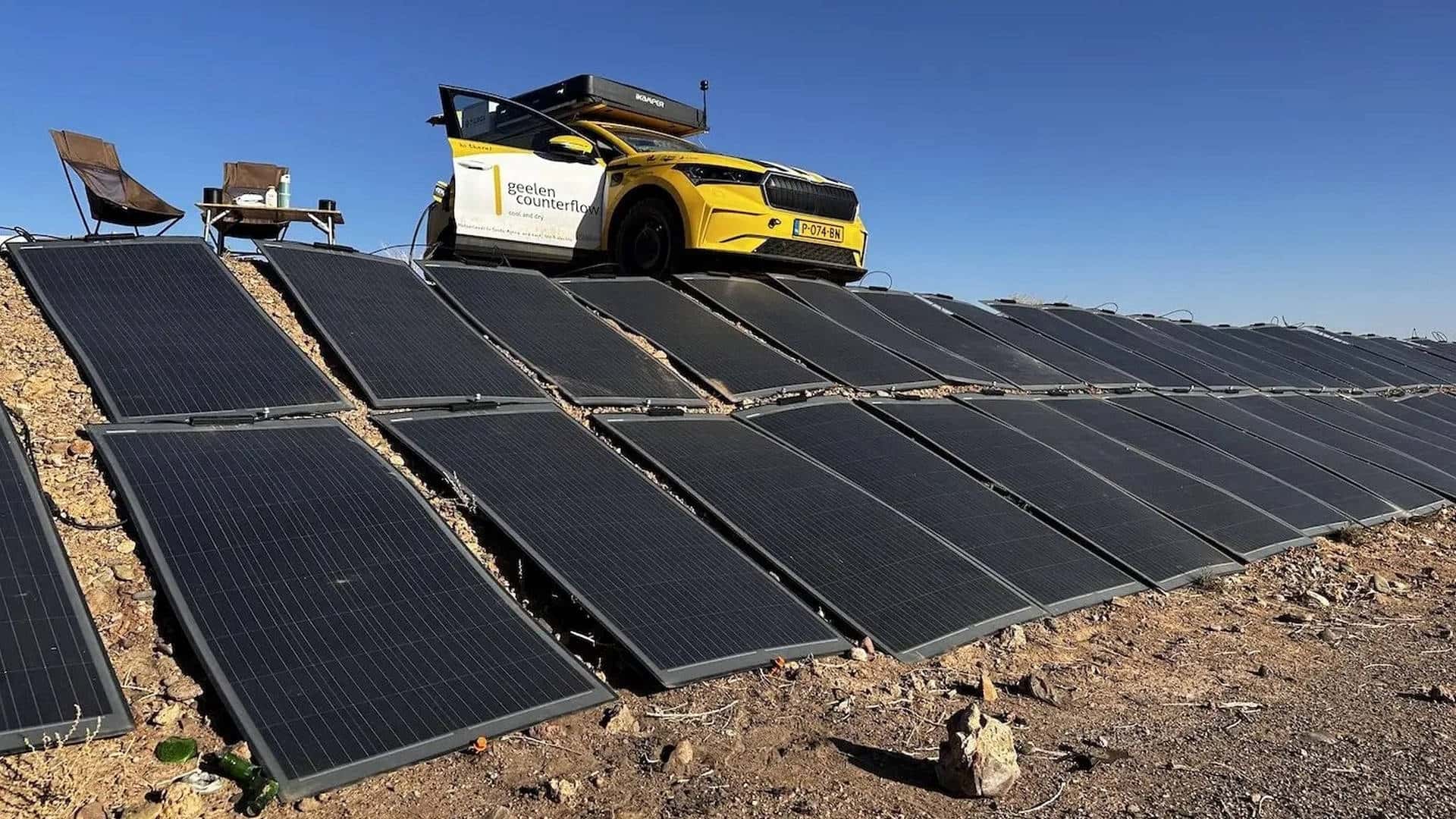
THIS COUPLE DROVE AN EV THROUGH 38 COUNTRIES. HERE'S HOW THEY CHARGED IN THE MIDDLE OF NOWHERE
DC charging is usually reserved for high-powered stations. Not this time, though.
The availability and reliability of public charging stations are still pain points for electric vehicle owners (although things are improving.) But what do you do when you’re on an epic overlanding trip through no fewer than 38 countries, some of which have pretty frail electrical grids that are hardly capable of delivering energy to domestic consumers, let alone charging a large EV battery?
Well, you get inventive and leave prepared. This includes packing a custom-made portable DC-to-DC charger which can take the energy provided by a bunch of solar panels and feed it into the charging port of your EV with minimal losses.
Meet Renske Cox and Maarten van Pel, a Dutch couple who decided it would be a good idea to go for a 24,000-mile drive from the Netherlands to South Africa and back with a 2021 Skoda Enyaq EV that took on the role of a car, hotel, shower cabin, kitchen and everything else needed for a trip that took no less than a year.
More Stories Like This
- SEMA: Optima Reveals Rivian Overland Builds Capable Of Recharging In The Wild
- Startup Called Potential Motors Reveals Small $136,600 Overlanding EV
- Watch Ford F-150 Lightning Electric Truck Hit The Off-Road Trails
- Chinese Tesla Model Y Lift Kit Adds 5 Inches Of Ground Clearance
The two kitted out their EV with a set of all-terrain tires, heavy-duty springs, a rooftop tent, an air compressor, a mobile generator, an induction cooktop and a pretty nifty solar panel holder in the trunk, among other things.
That custom-built holder and its contents were the key to achieving a whopping rate of 54% solar energy used out of a total of over 5,500 kilowatt-hours during the 12-month trip. Using no fewer than 60 portable solar panels, the couple was able to DC fast charge their EV in the middle of nowhere and get enough driving range for the next day’s itinerary.
It’s not as convenient as plugging in a DC charging cable at, say, an Electrify America station, but it sure beats getting stranded in the scorching heat.
The DC-to-DC charger was made by a company called Venema E-mobility in the Netherlands, while the solar panels used to capture the sun’s energy were rated at 180 W each. In theory, that means a total potential power output of 10.8 kW, which is more in the Level 2 charging territory rather than Level 3, but it’s still pretty impressive that the system worked and helped the couple get back on the road completely off-grid.
You can find out more about the 4x4electric expedition in the videos embedded throughout this article. Then, let us know what you think in the comments section below.